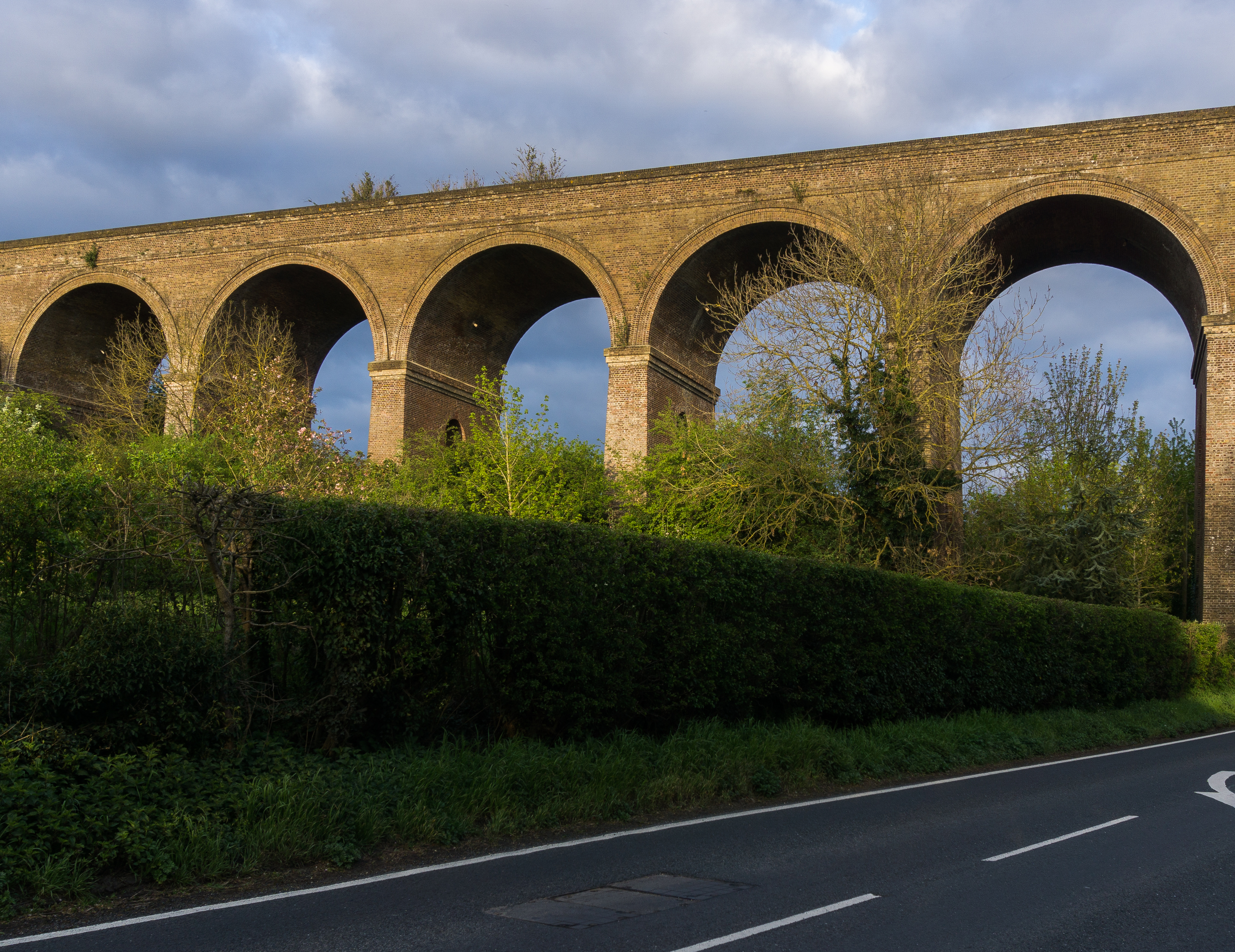Chappel Viaduct on:
[Wikipedia]
[Google]
[Amazon]
The Chappel Viaduct is a railway
 The viaduct was designated a Grade II listed structure on 27 November 1967. It is the longest bridge in
The viaduct was designated a Grade II listed structure on 27 November 1967. It is the longest bridge in
viaduct
A viaduct is a specific type of bridge that consists of a series of arches, piers or columns supporting a long elevated railway or road. Typically a viaduct connects two points of roughly equal elevation, allowing direct overpass across a wide v ...
that crosses the River Colne in the Colne Valley in Essex, England. It carries the Gainsborough Line which now is a short branch linking in Essex to in Suffolk
Suffolk () is a ceremonial county of England in East Anglia. It borders Norfolk to the north, Cambridgeshire to the west and Essex to the south; the North Sea lies to the east. The county town is Ipswich; other important towns include Lowes ...
. The line previously, however, extended to Shelford in Cambridgeshire.
It was completed in 1849 by the Eastern Union Railway, which was later absorbed into the Great Eastern Railway
The Great Eastern Railway (GER) was a pre-grouping British railway company, whose main line linked London Liverpool Street to Norwich and which had other lines through East Anglia. The company was grouped into the London and North Eastern R ...
. It is the longest bridge in the East Anglia
East Anglia is an area in the East of England, often defined as including the counties of Norfolk, Suffolk and Cambridgeshire. The name derives from the Anglo-Saxon kingdom of the East Angles, a people whose name originated in Anglia, in ...
region at , and one of the largest brick-built structures in the country. It was listed at Grade II in 1967.
Description
The viaduct consists of 32 semi-circular spans, with tapered piers; it is long and rises to a maximum height of . The piers consist of two shafts, separated by a opening, joined at the top and bottom by arches. Each shaft contains a hollow void up to by , partially filled with concrete to the level of the bottom arch. The running level of the viaduct has a gradient of 1 in 120.Construction
The seven million bricks used in the construction of the viaduct were made from clay excavated from the nearby village of Bures. It was built to carry a double-track railway but only a single track was laid. The bridge was built by Peter Bruff between 1847 and 1849 for the Colchester, Stour Valley, Sudbury & Halstead Railway, later part of theGreat Eastern Railway
The Great Eastern Railway (GER) was a pre-grouping British railway company, whose main line linked London Liverpool Street to Norwich and which had other lines through East Anglia. The company was grouped into the London and North Eastern R ...
.
The railway initially planned to build the viaduct with laminated timber but Bruff opted for brick to reduce the cost. He debated the cost benefits of brick compared to timber with the Great Western Railway
The Great Western Railway (GWR) was a British railway company that linked London with the southwest, west and West Midlands of England and most of Wales. It was founded in 1833, received its enabling Act of Parliament on 31 August 1835 and ran ...
's chief engineer Isambard Kingdom Brunel after a lecture at the Institution of Civil Engineers in 1850, Brunel being strongly in favour of using timber. Bruff went on to commission a painting of the viaduct by Frederick Brett Russell, which is now held by Ipswich Museum. Sources differ on the cost of construction; E. A. Labrum gives the cost as £21,000, while Historic England state a figure of £32,000 (both 1849).
A foundation stone in pier 21 was laid by the railway company's chairman and deputy chairman at the start of works in September 1847 and newly minted coins were placed inside as a souvenir. The stone and coins disappeared within a few hours of being placed and a bricklayer was later arrested, having tried to pay at a bar with a new half sovereign, but was not convicted of the theft due to lack of evidence.
Listing
 The viaduct was designated a Grade II listed structure on 27 November 1967. It is the longest bridge in
The viaduct was designated a Grade II listed structure on 27 November 1967. It is the longest bridge in East Anglia
East Anglia is an area in the East of England, often defined as including the counties of Norfolk, Suffolk and Cambridgeshire. The name derives from the Anglo-Saxon kingdom of the East Angles, a people whose name originated in Anglia, in ...
, and was reported to have been built out of 7 million bricks, making it the third-largest brick-built structure in England after the Battersea Power Station in London, although Stockport Viaduct and Ouse Valley Viaduct used approximately 11 million bricks each.
See also
* List of railway bridges and viaducts in the United KingdomReferences
External links
{{Commons category-inline Bridges completed in 1849 Railway viaducts in Essex Grade II listed buildings in Essex Great Eastern Railway Grade II listed bridges